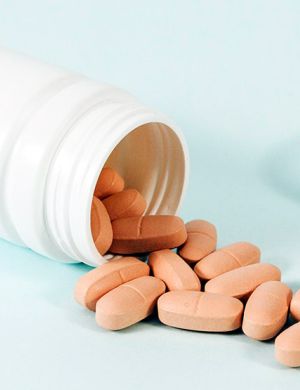
FDA Regulations for Medical Device Approval in USA
FDA’s Center for Devices and Radiological Health (CDRH) is responsible for regulating firms who manufacture, repackage, re-label, and/or import medical devices sold in the United States. In addition, CDRH regulates radiation-emitting electronic products (medical and non-medical) such as lasers, x-ray systems, ultrasound equipment, microwave ovens and color televisions.
Medical devices are classified into Class I, II, and III. Regulatory control increases from Class I to Class III. The device classification regulation defines the regulatory requirements for a general device type. Most Class I devices are exempt from Premarket Notification 510(k); most Class II devices require Premarket Notification 510(k); and most Class III devices require Premarket Approval.
The basic regulatory requirements that manufacturers of medical devices distributed in the U.S. must comply with are:
- Establishment registration,
- Medical Device Listing,
- Premarket Notification 510(k), unless exempt, or Premarket Approval (PMA),
- Investigational Device Exemption (IDE) for clinical studies
- Quality System (QS) regulation,
- Labeling requirements, and
- Medical Device Reporting (MDR)
Establishment Registration – 21 CFR Part 807
Manufacturers (both domestic and foreign) and initial distributors (importers) of medical devices must register their establishments with the FDA. All establishment registrations must be submitted electronically unless a waiver has been granted by FDA. All registration information must be verified annually between October 1st and December 31st of each year. In addition to registration, foreign manufacturers must also designate a U.S. Agent. Beginning October 1, 2007, most establishments are required to pay an establishment registration fee.
Medical Device Listing – 21CFR Part 807
Manufacturers must list their devices with the FDA. Establishments required to list their devices include:
- Manufacturers,
- Contract manufacturers,
- Contract sterilizers,
- Re-packagers and Re-labelers,
- Specification developers,
- Re-processors single-use devices,
- Remanufacturer
- Manufacturers of accessories and components sold directly to the end user
- U.S. manufacturers of “export only” devices
- Medical Device Listing
Premarket Notification 510(k) – 21 CFR Part 807 Subpart E
If the device requires the submission of a Premarket Notification 510(k), it cannot commercially be distributed until a letter of substantial equivalence from FDA authorizing is received. A 510(k) must demonstrate that the device is substantially equivalent to one legally in commercial distribution in the United States: (1) before May 28, 1976; or (2) to a device that has been determined by FDA to be substantially equivalent.
On October 26, 2002 the Medical Device User Fee and Modernization Act of 2002 became law. It authorizes FDA to charge a fee for medical device Premarket Notification 510(k) reviews. A small business may pay a reduced fee. The application fee applies to Traditional, Abbreviated, and Special 510(k)s.
Most Class I devices and some Class II devices are exempt from the Premarket Notification 510(k) submission.
If user plans to send a 510(k) application to FDA for a Class I or Class II device, the user may find 510(k) review by an Accredited Persons beneficial. FDA accredited 12 organizations to conduct a primary review of 670 types of devices. By law, FDA must issue a final determination within 30 days after receiving a recommendation from an Accredited Person. 510(k) review by an Accredited Person is exempt from any FDA fee; however, the third-party may charge a fee for its review.
Premarket Approval (PMA) – 21 CFR Part 814
Product requiring PMAs are Class III devices are high risk devices that pose a significant risk of illness or injury, or devices found not substantially equivalent to Class I and II predicate through the 510(k) process. The PMA process is more involved and includes the submission of clinical data to support claims made for the device.
Beginning fiscal year 2003 (October 1, 2002 through September 30, 2003), medical device user fees apply to original PMAs and certain types of PMA supplements. Small businesses are eligible for reduced or waived fees.
Investigational Device Exemption (IDE) – 21CFR Part 812
An investigational device exemption (IDE) allows the investigational device to be used in a clinical study in order to collect safety and effectiveness data required to support a Premarket Approval (PMA) application or a Premarket Notification 510(k) submission to FDA. Clinical studies with devices of significant risk must be approved by FDA and by an Institutional Review Board (IRB) before the study can begin. Studies with devices of non-significant risk must be approved by the IRB only before the study can begin.
Quality System Regulation (QS regulation) – 21 CFR Part 820
The quality system regulation includes requirements related to the methods used in and the facilities and controls used for: designing, purchasing, manufacturing, packaging, labeling, storing, installing and servicing of medical devices. Manufacturing facilities undergo FDA inspections to assure compliance with the QS requirements.
Medical Device Reporting – 21 CFR Part 803
Incidents in which a device may have caused or contributed to a death or serious injury must to be reported to FDA under the Medical Device Reporting program. In addition, certain malfunctions must also be reported. The MDR regulation is a mechanism for FDA and manufacturers to identify and monitor significant adverse events involving medical devices. The goals of the regulation are to detect and correct problems in a timely manner.
Don’t miss out! Click here to stay in touch.
Categories
- Biopharma (47)
- Consumer Health (15)
- Cosmetics (8)
- Diagnostics (5)
- Digital Health (8)
- Food (2)
- Medical Device (100)
- OTC (3)
- Regulatory Intelligence (5)
- Standards (41)
Recent Blogs
Get the latest updates from Vistaar

Related Posts
CONNECT WITH US

Let's talk about how DDi can help you







